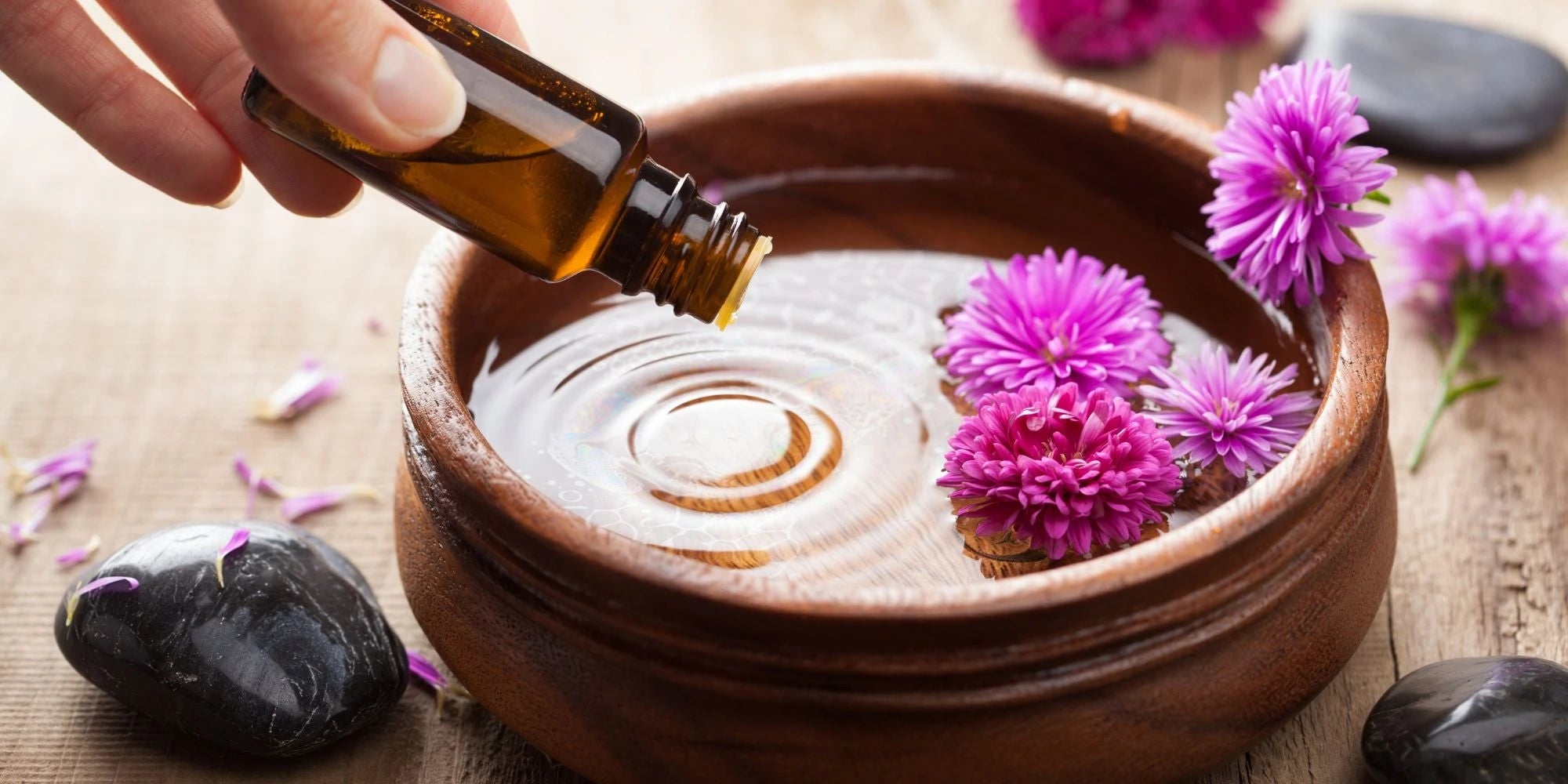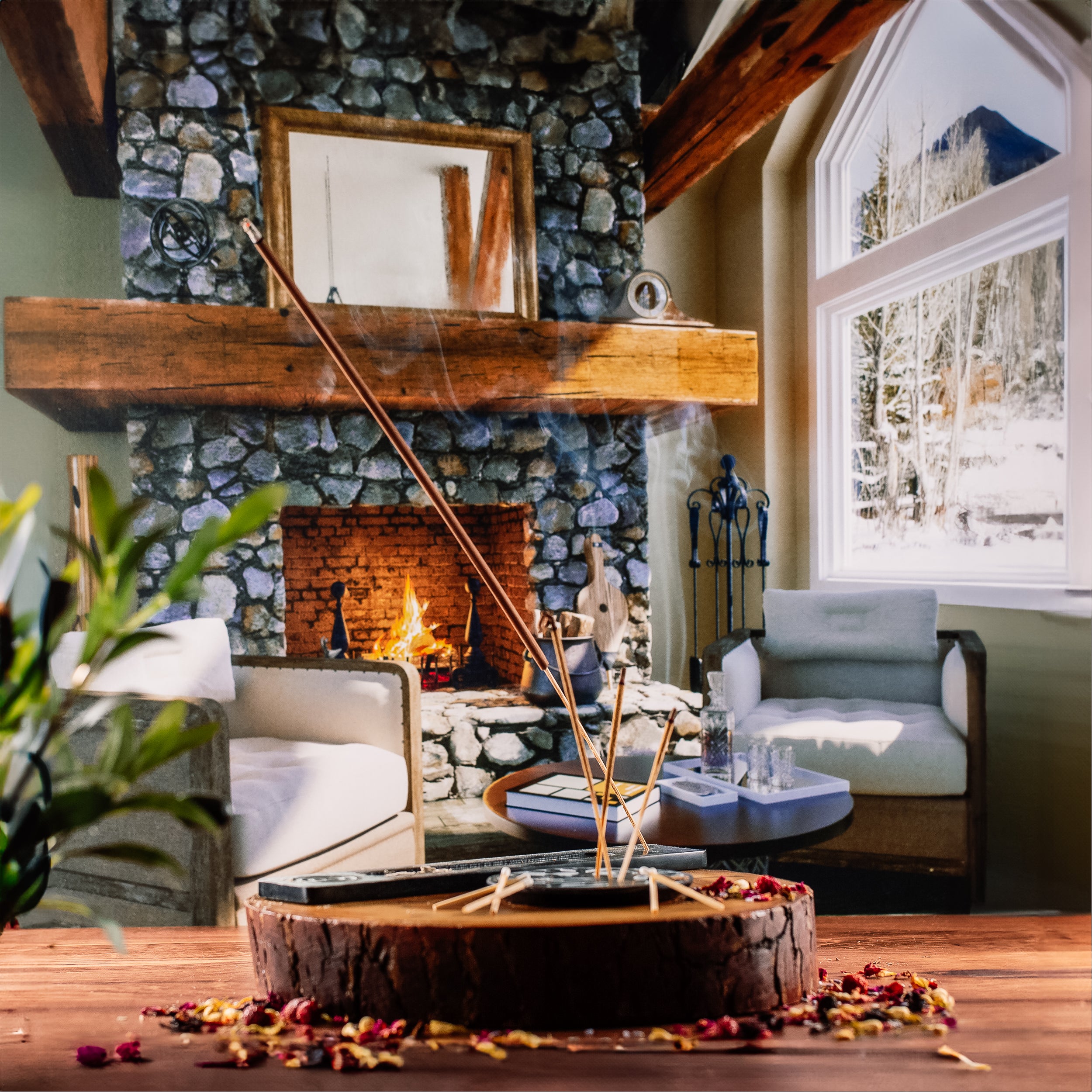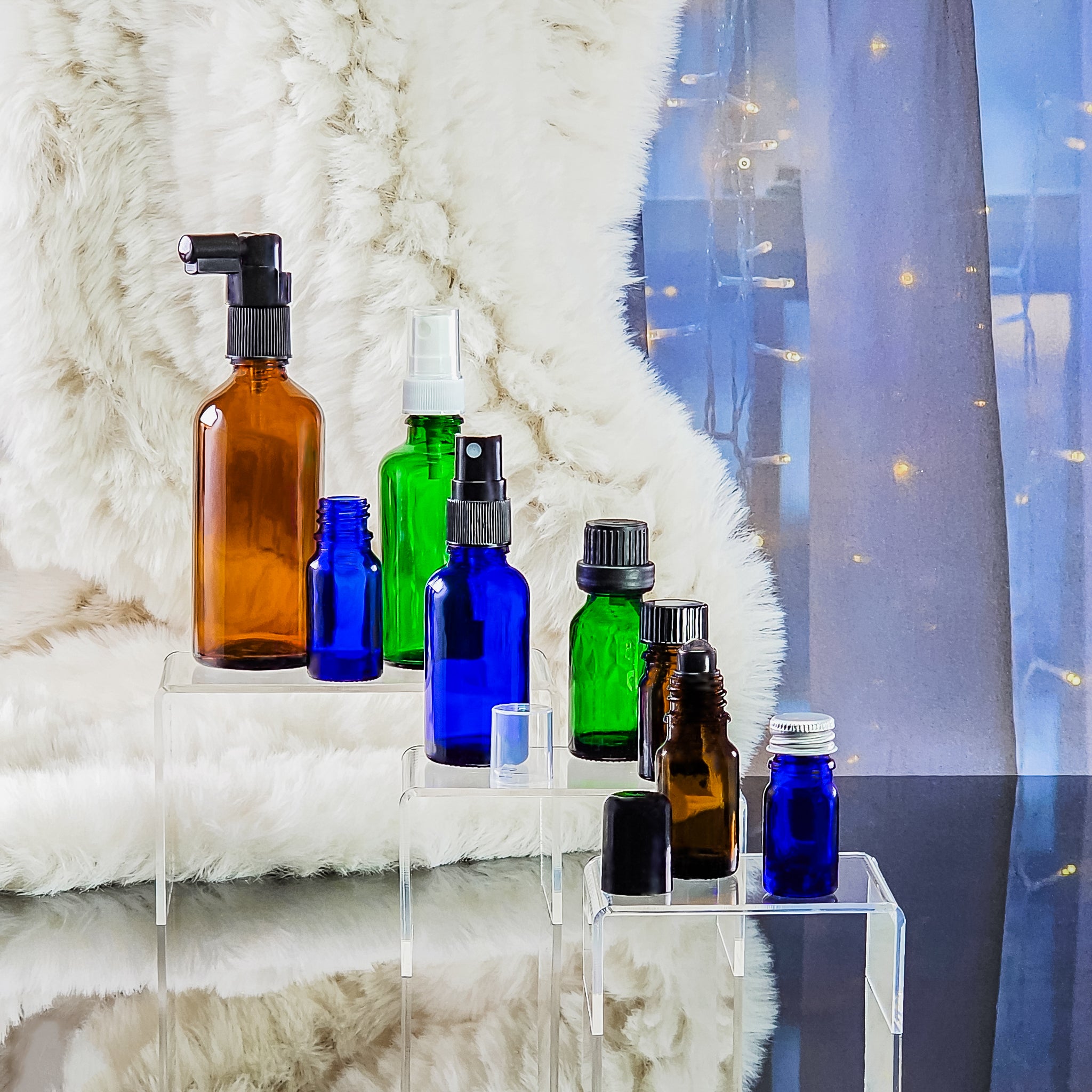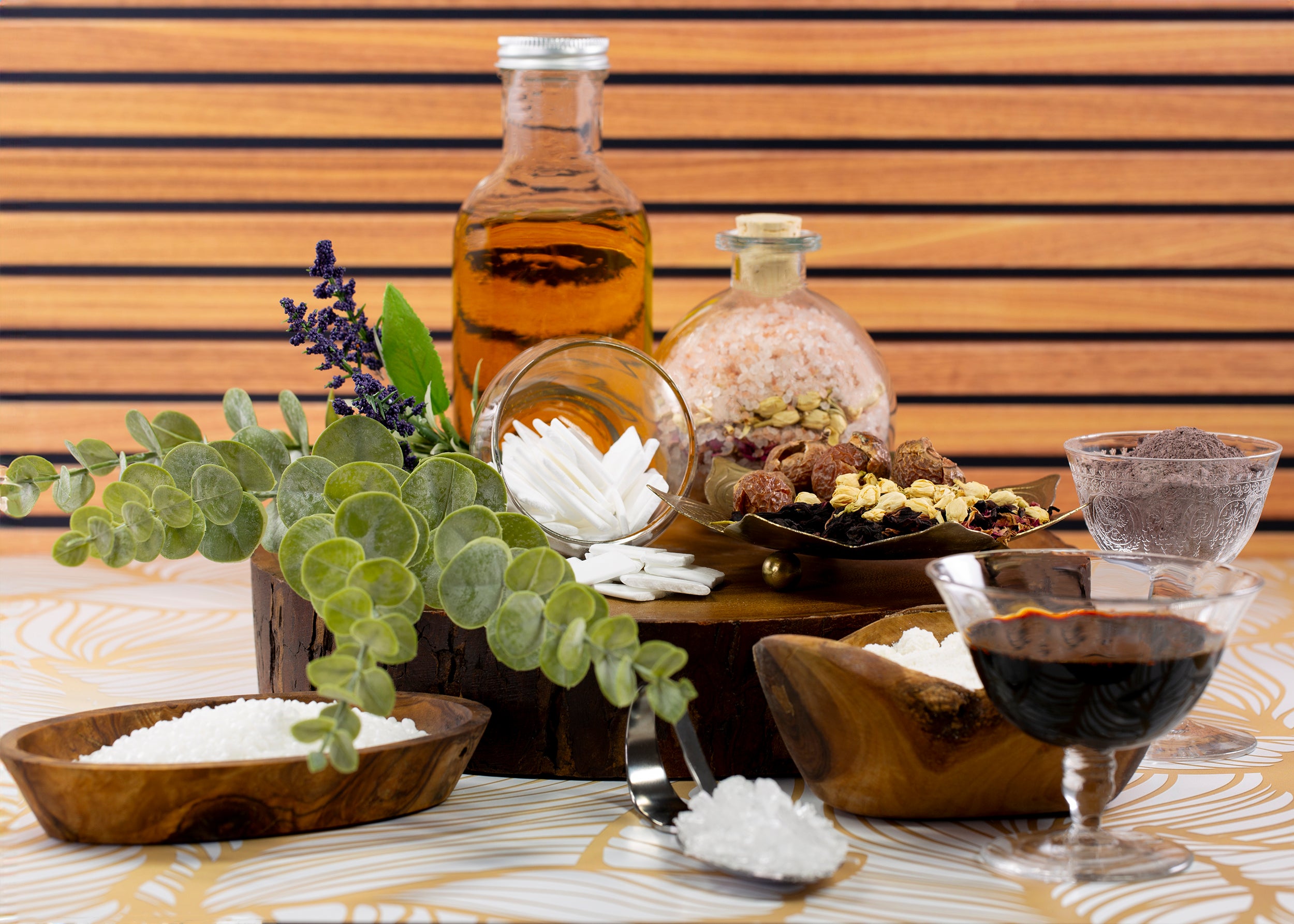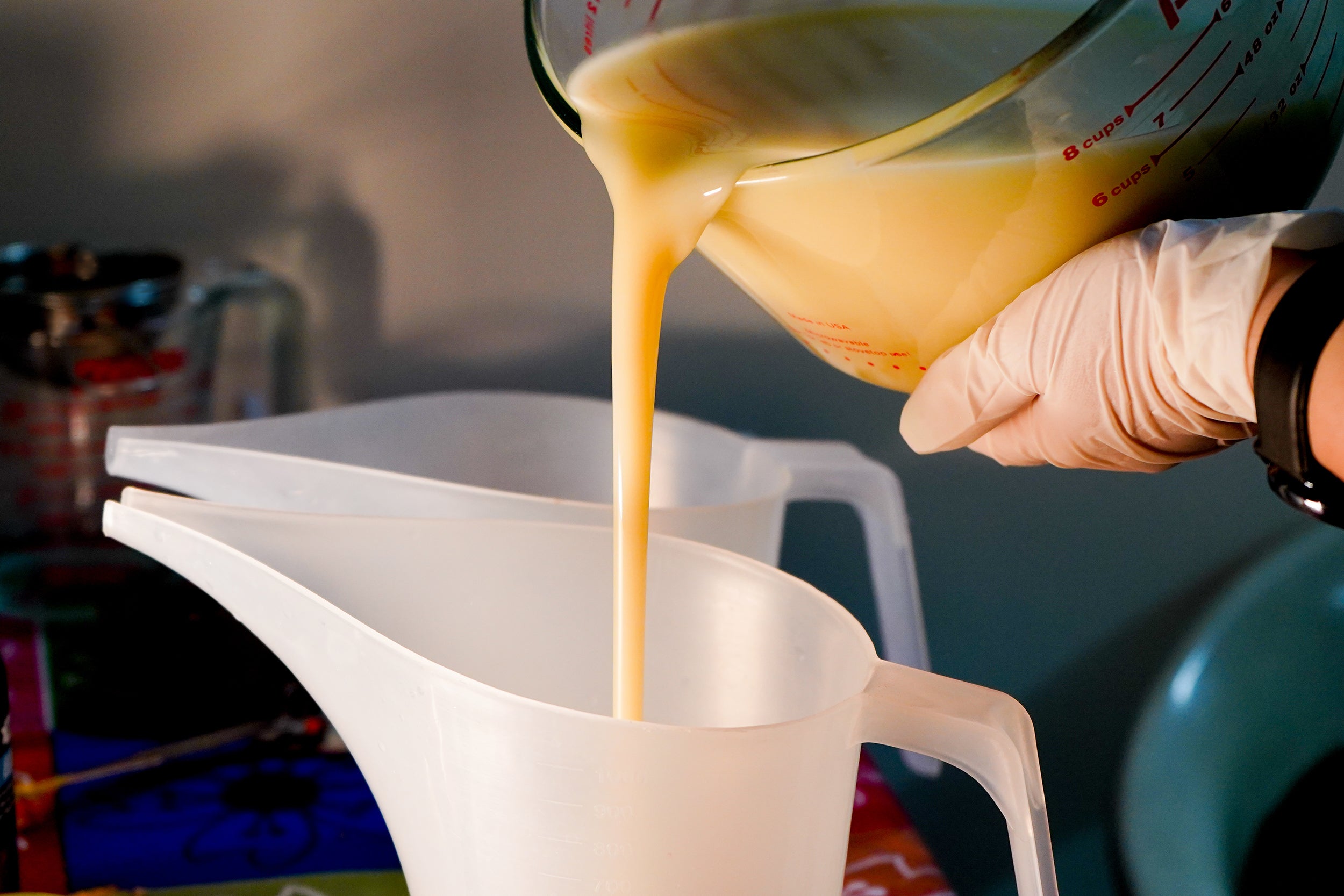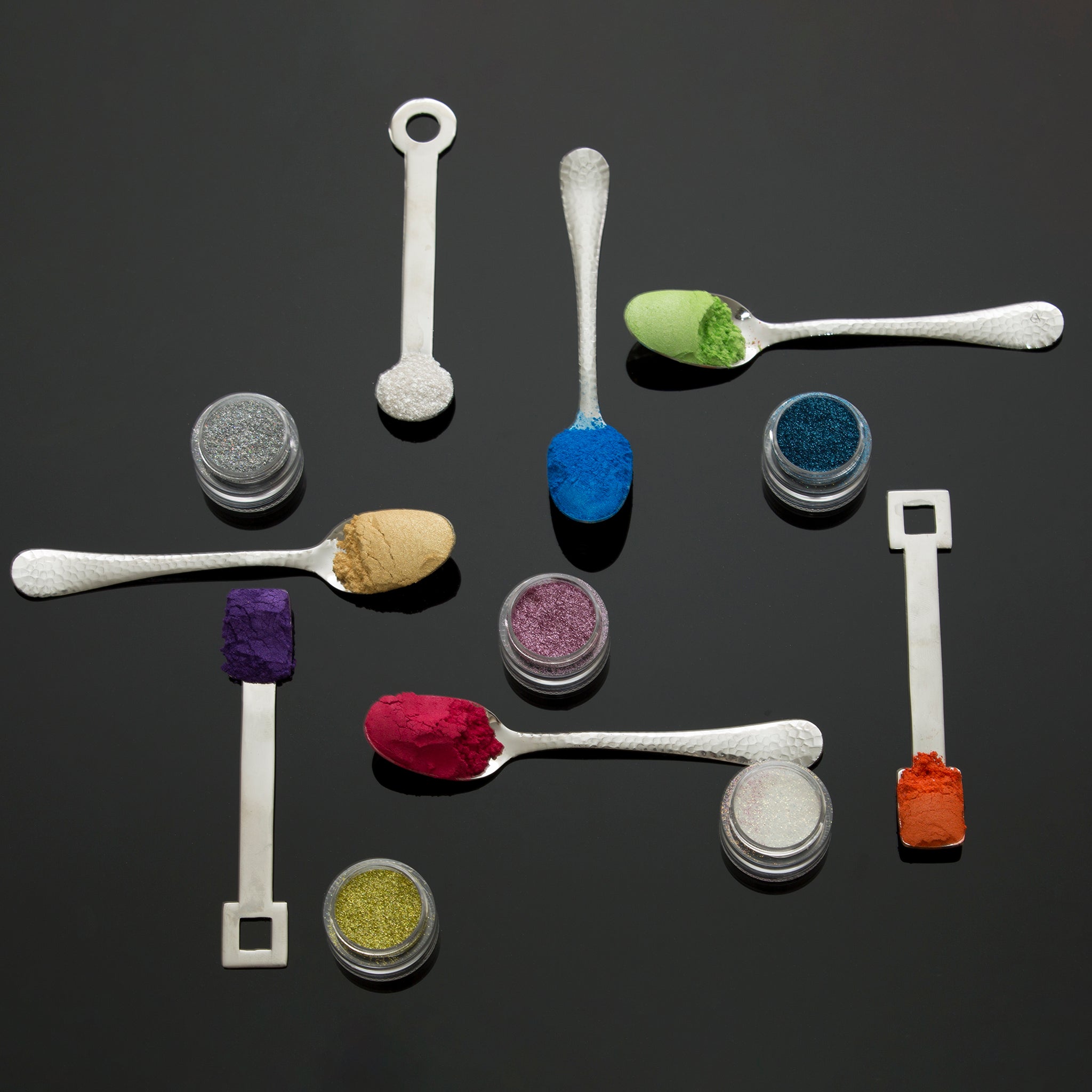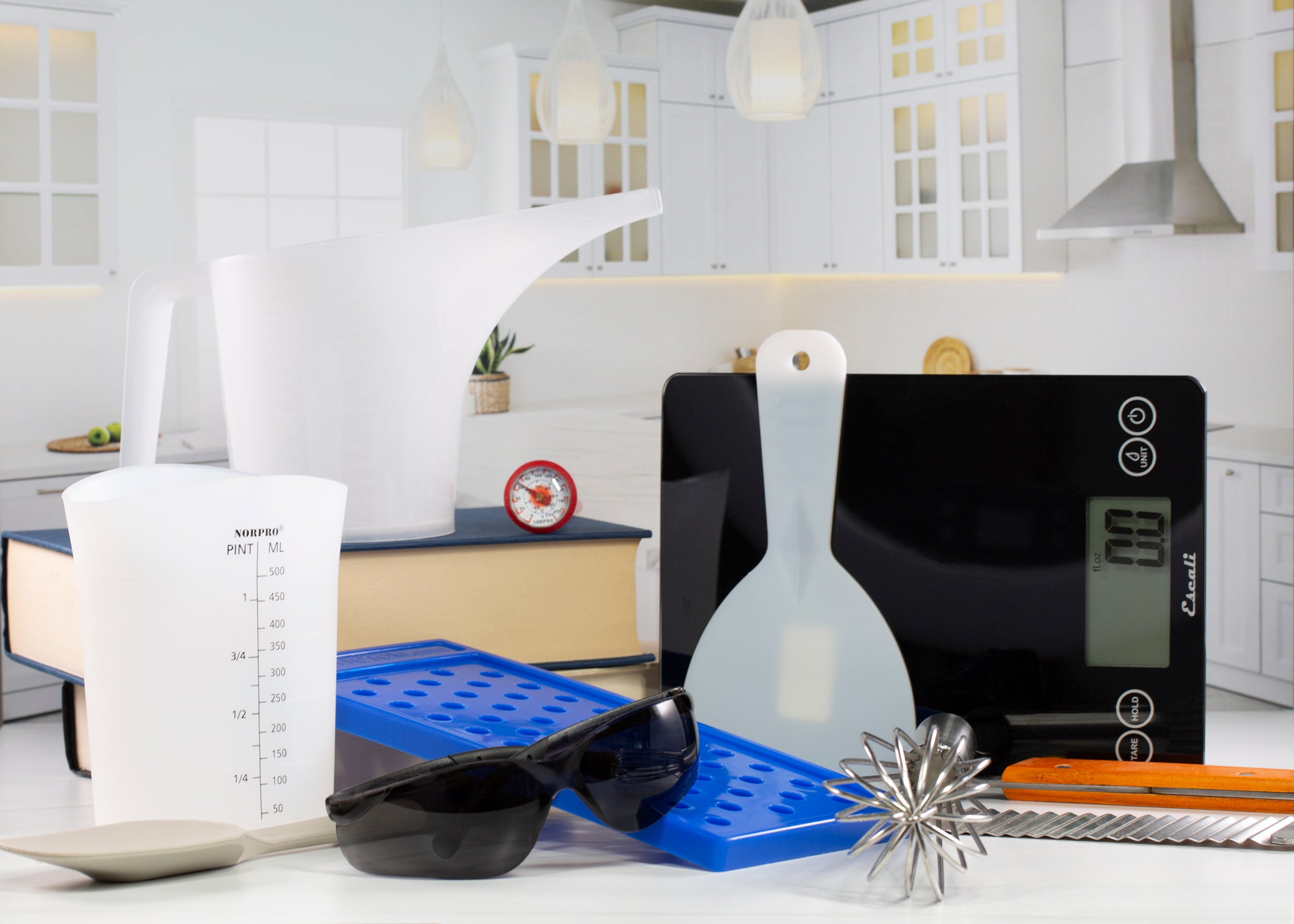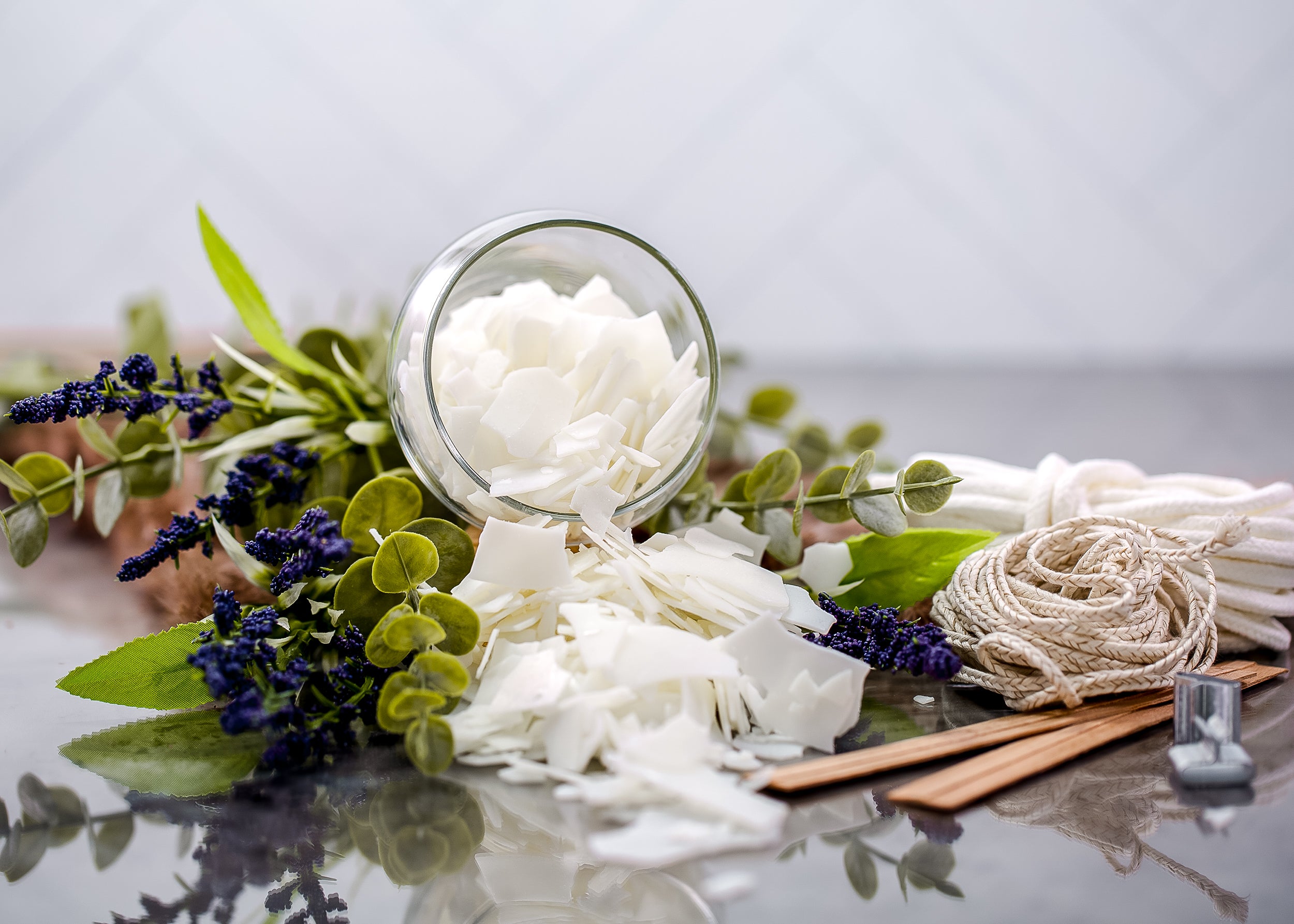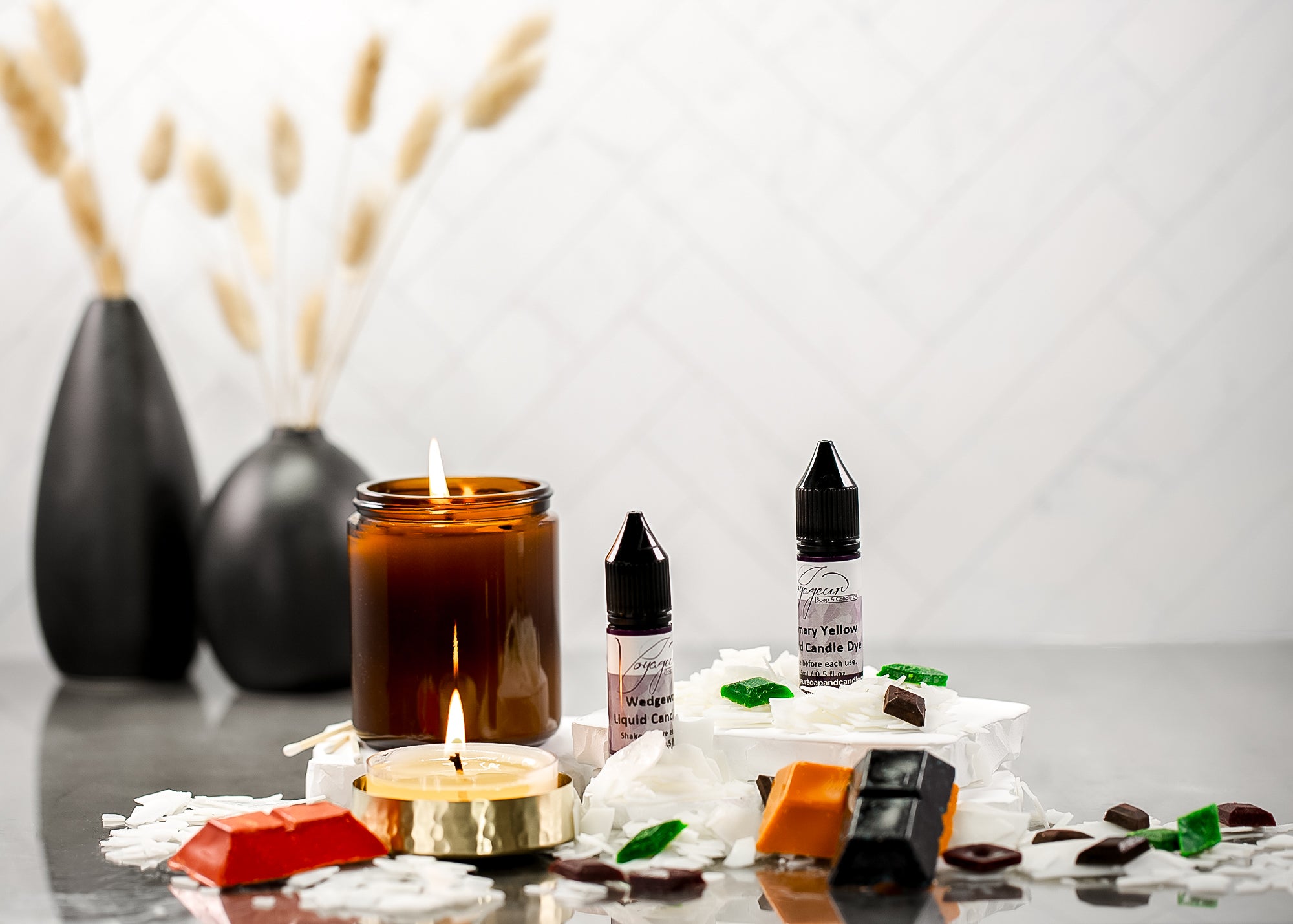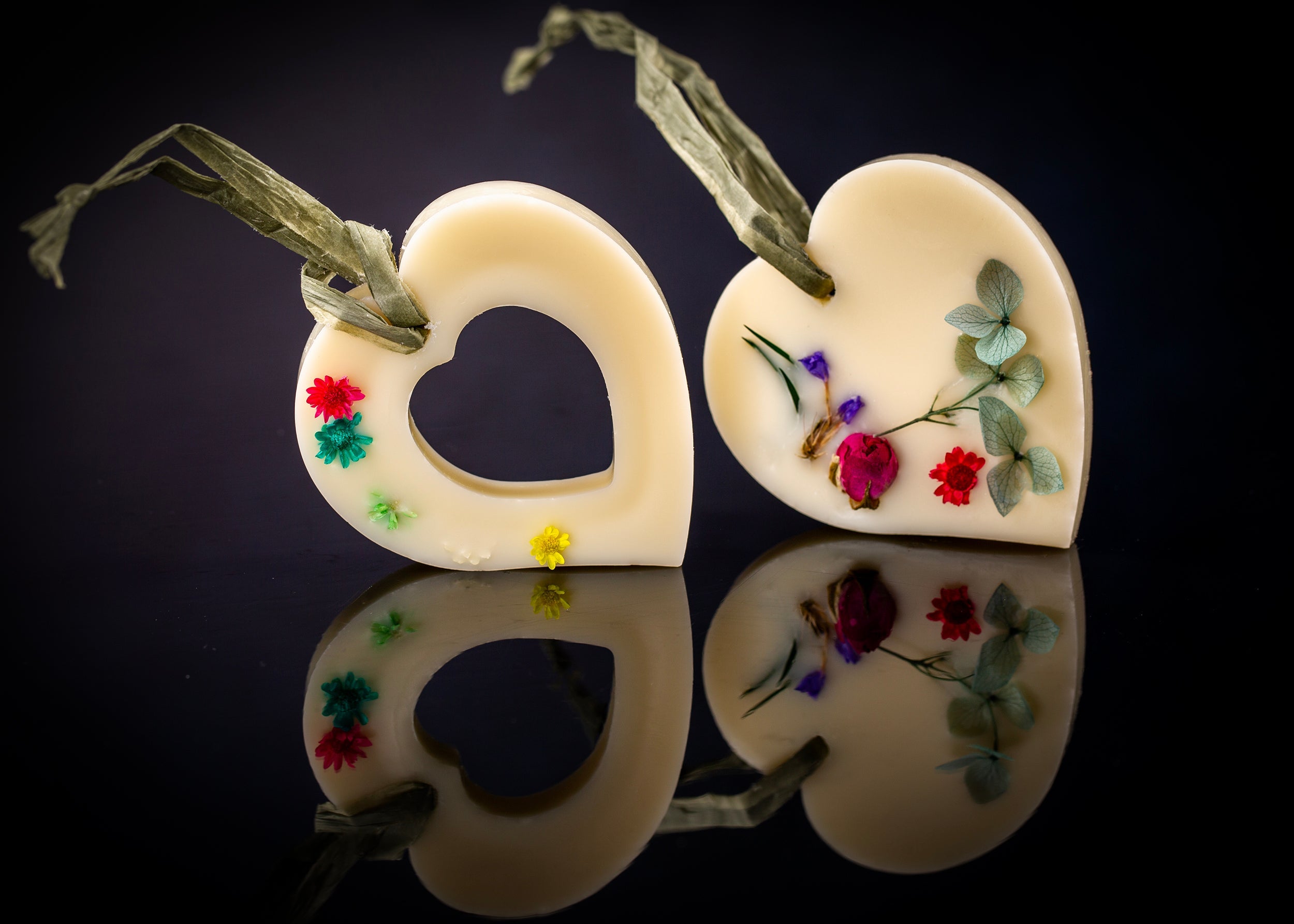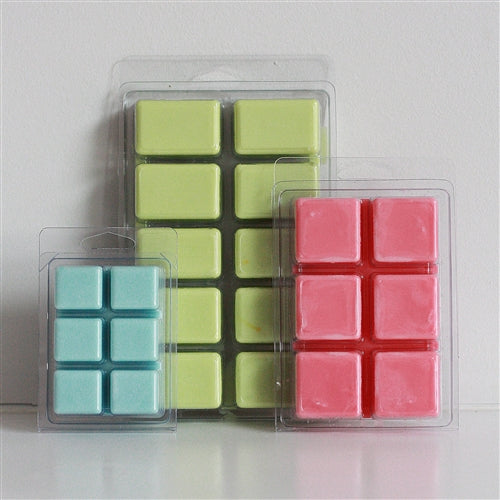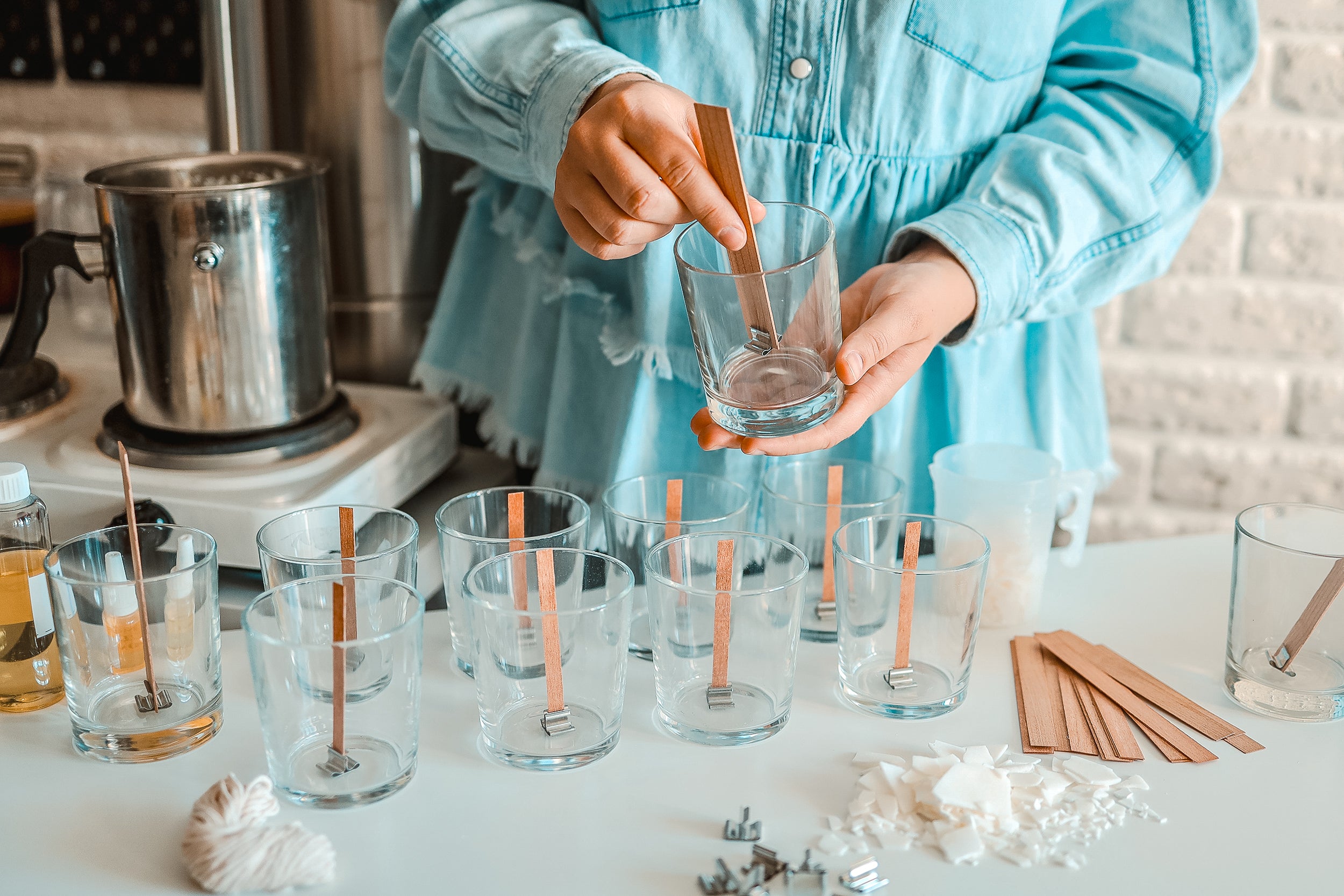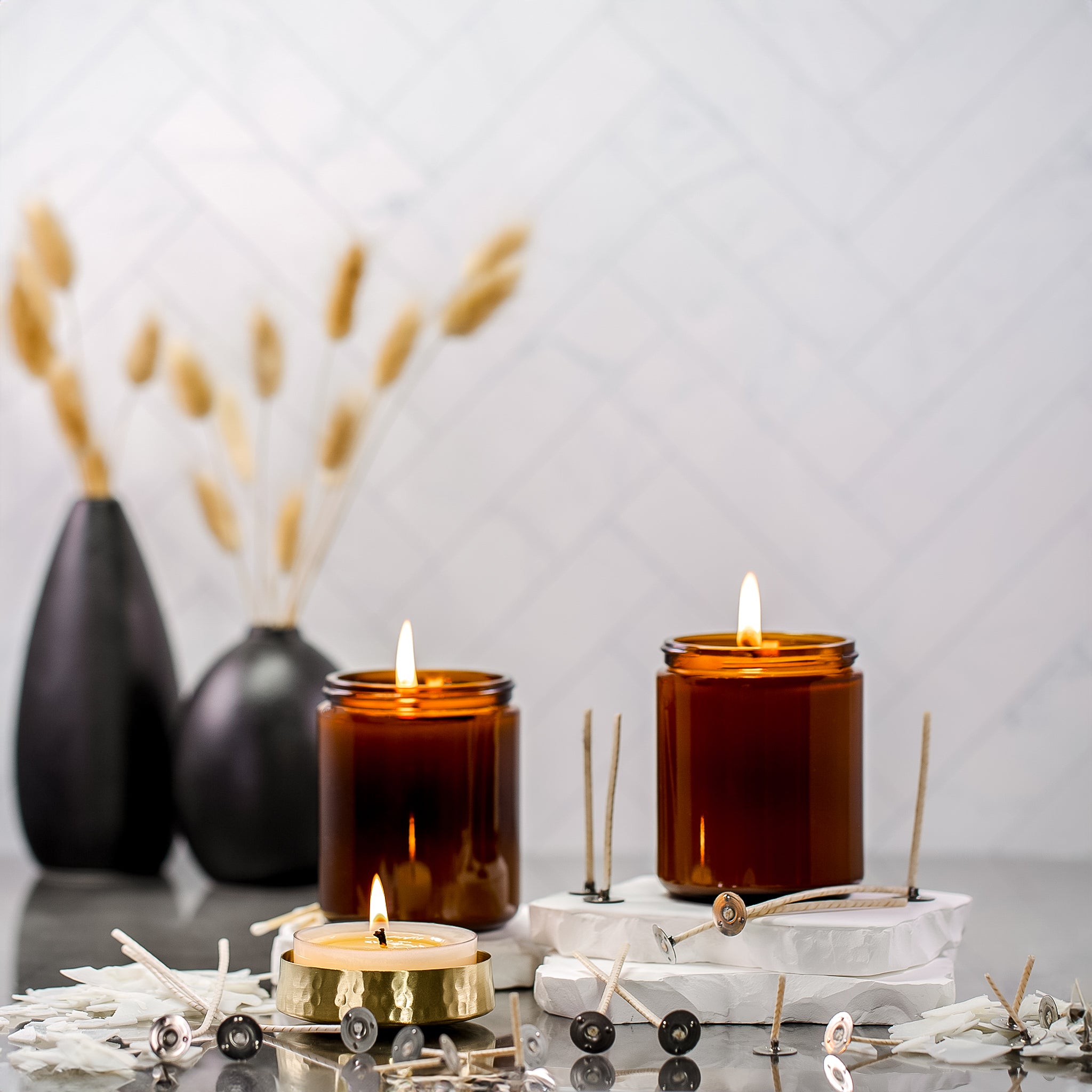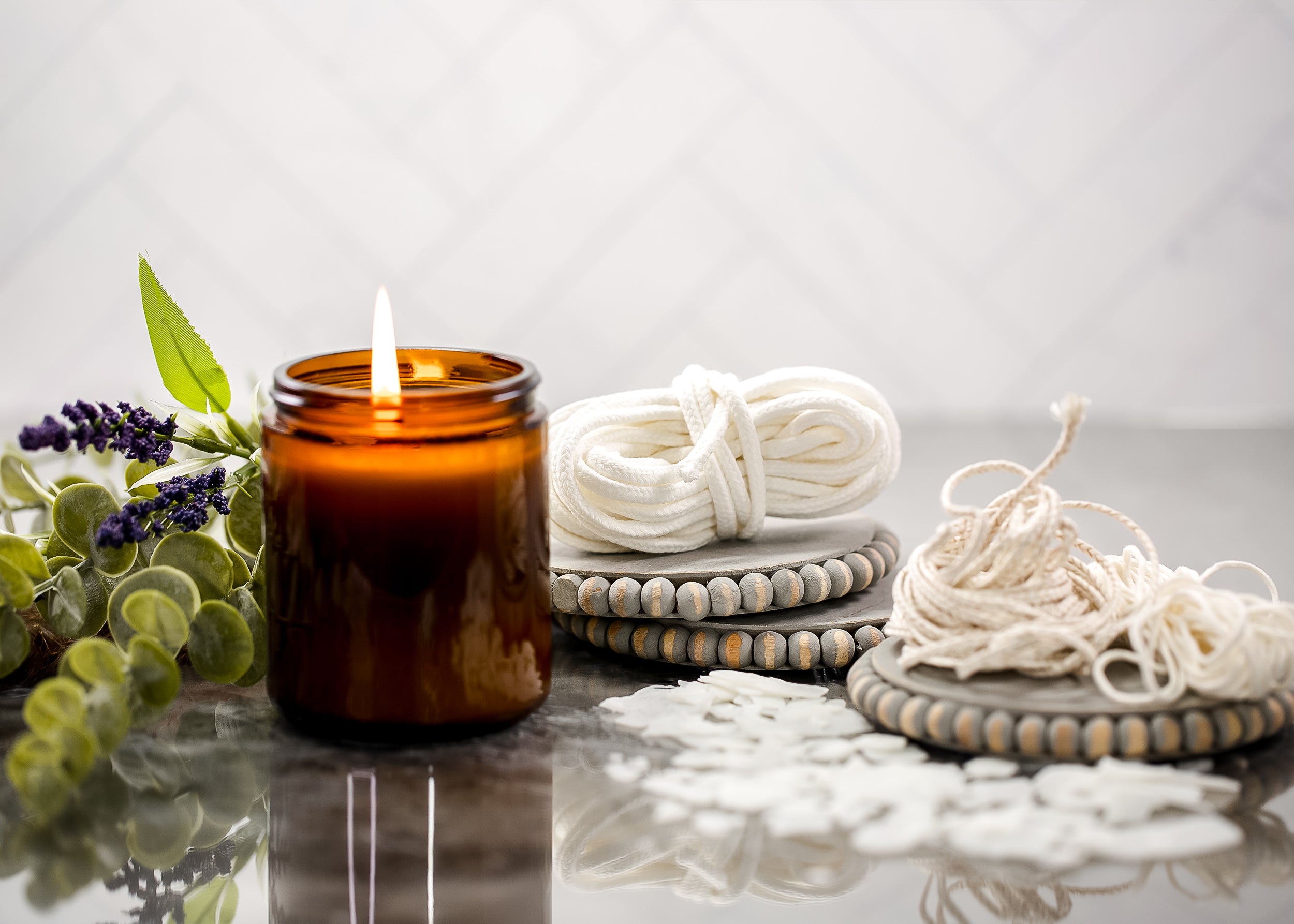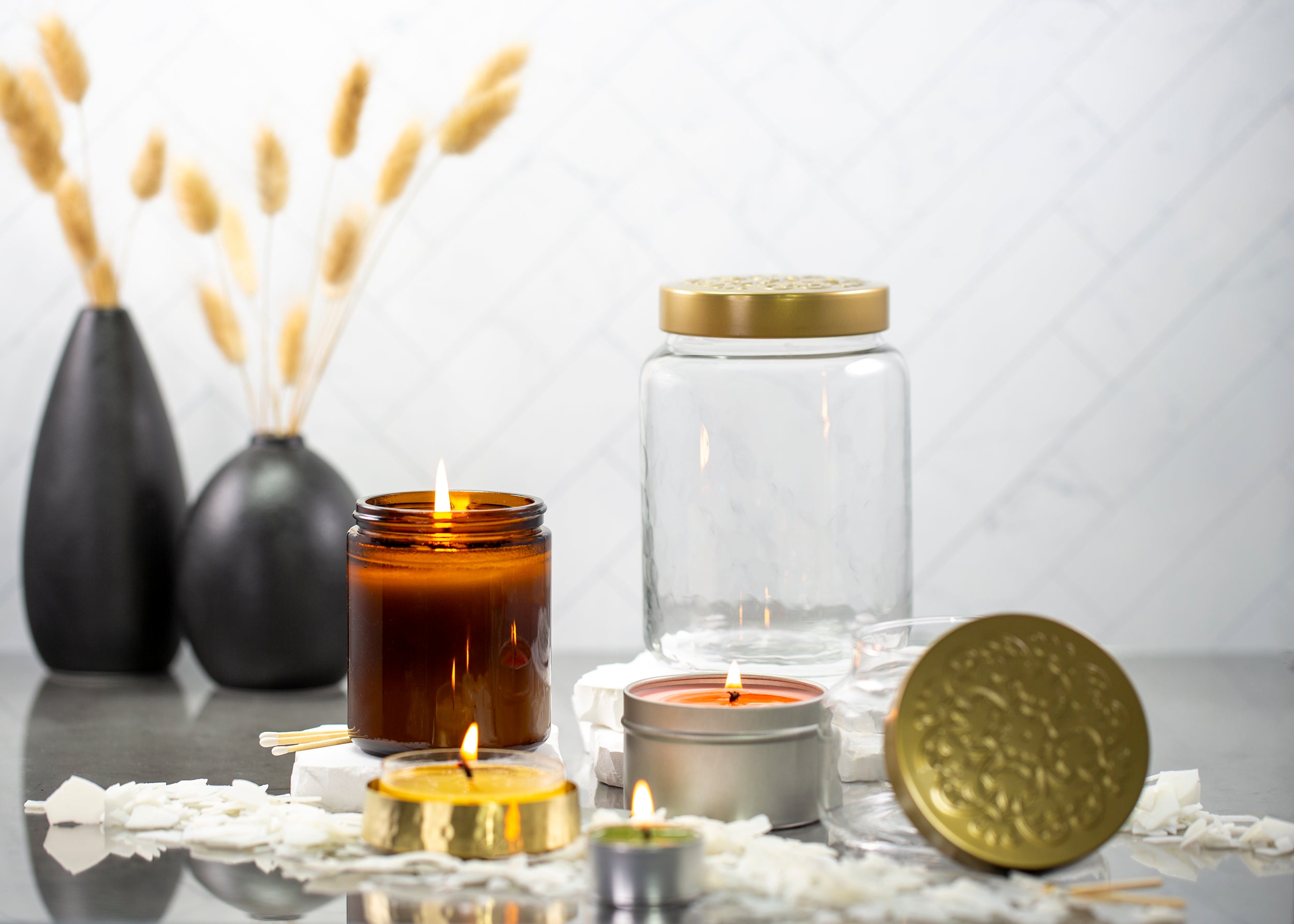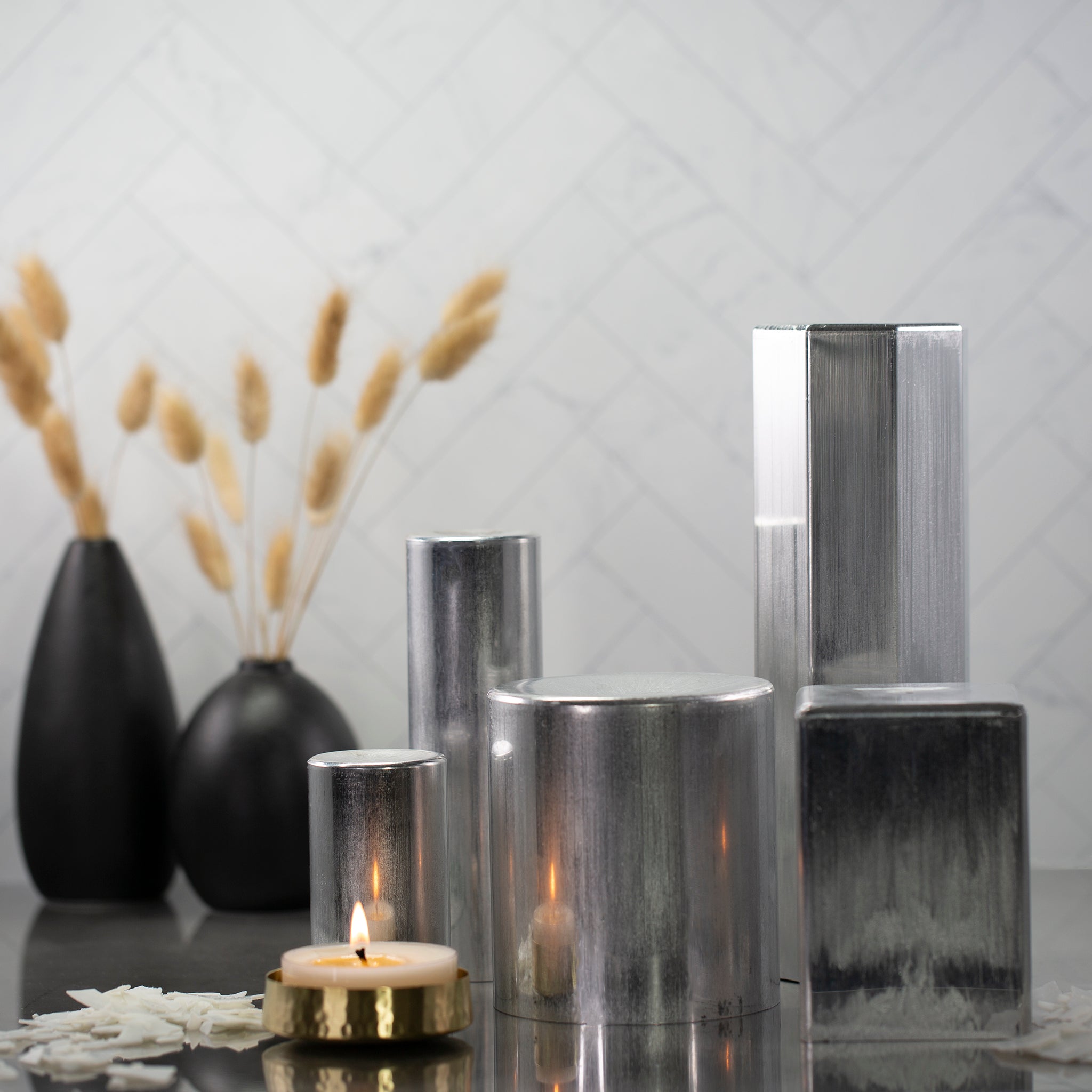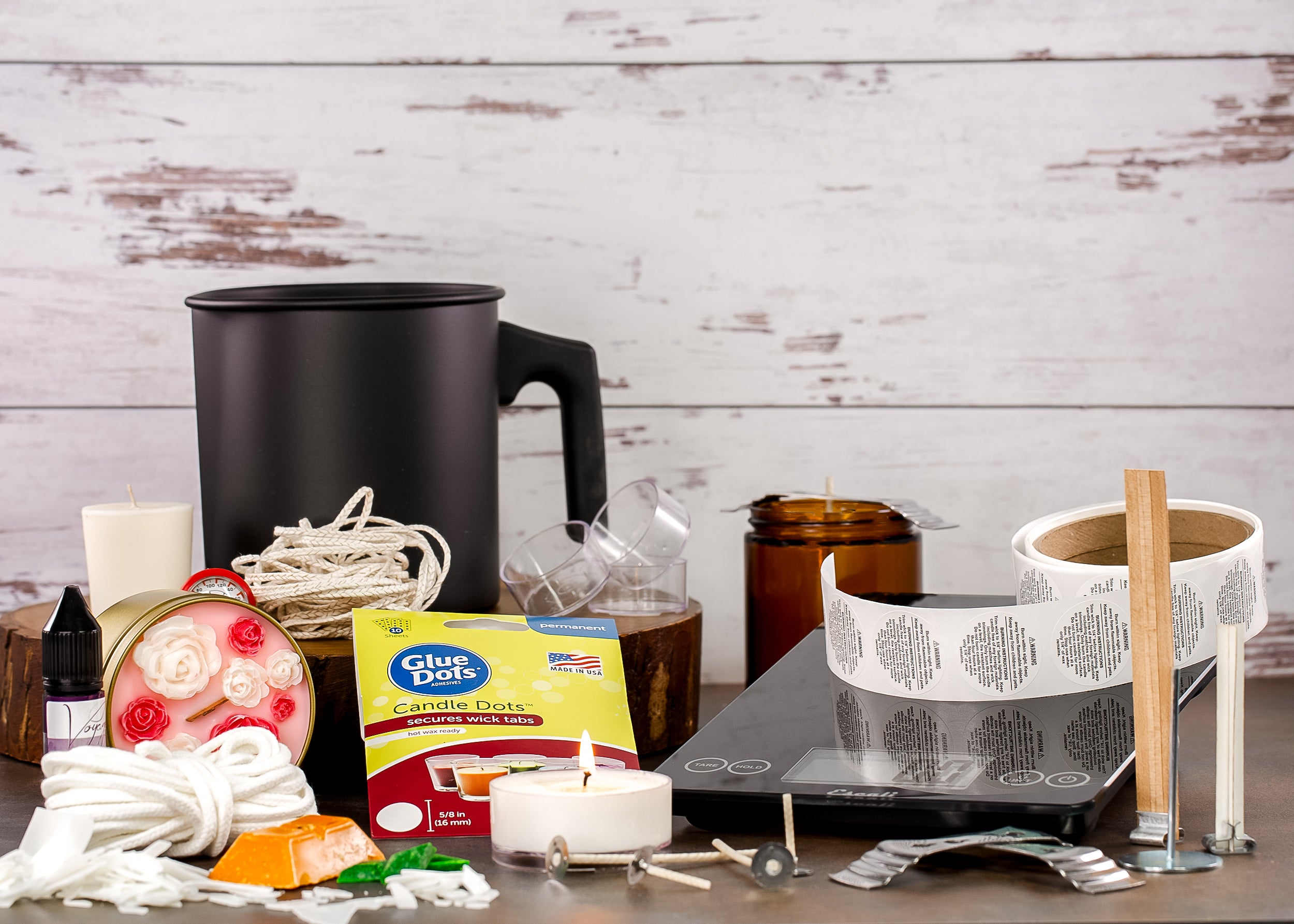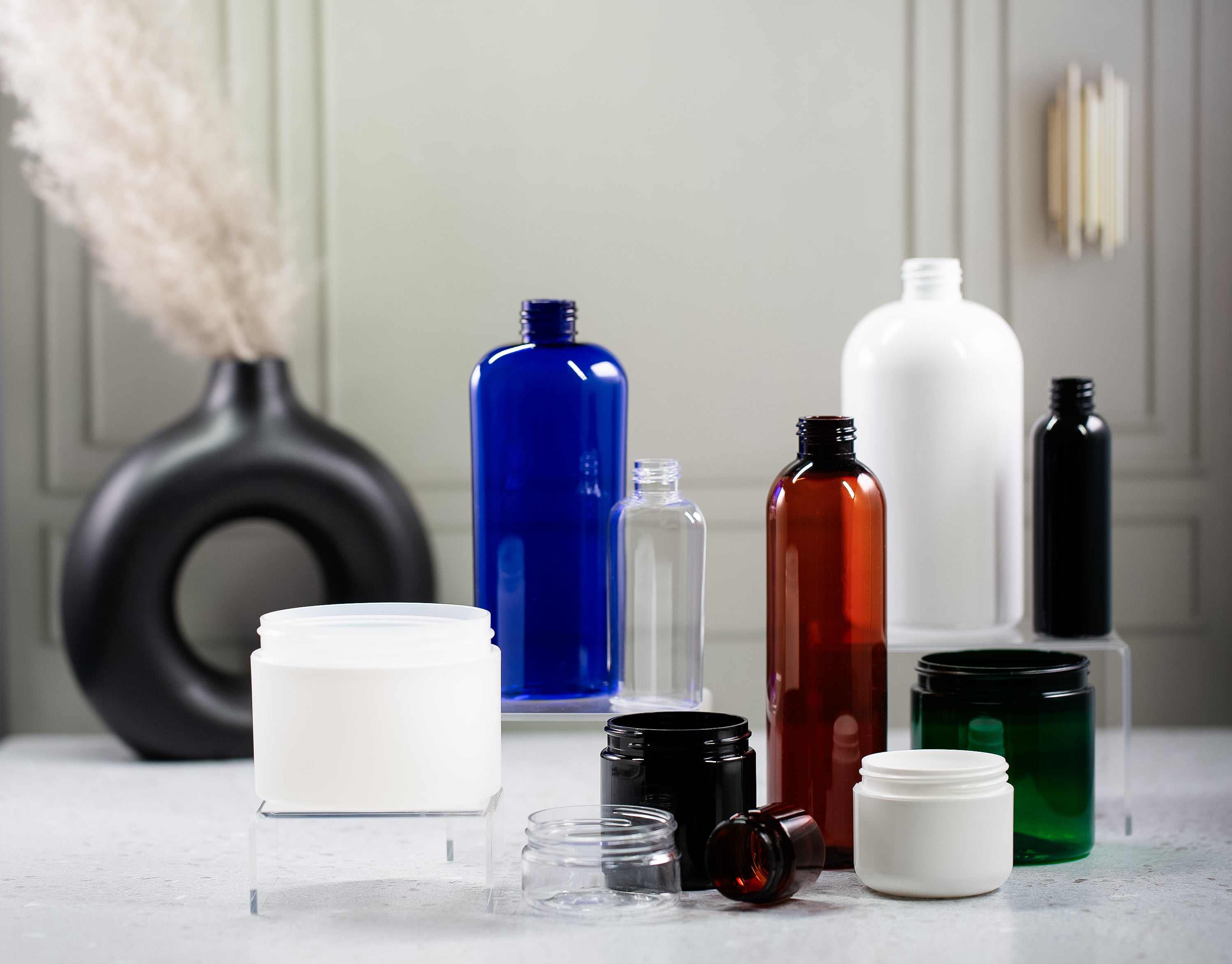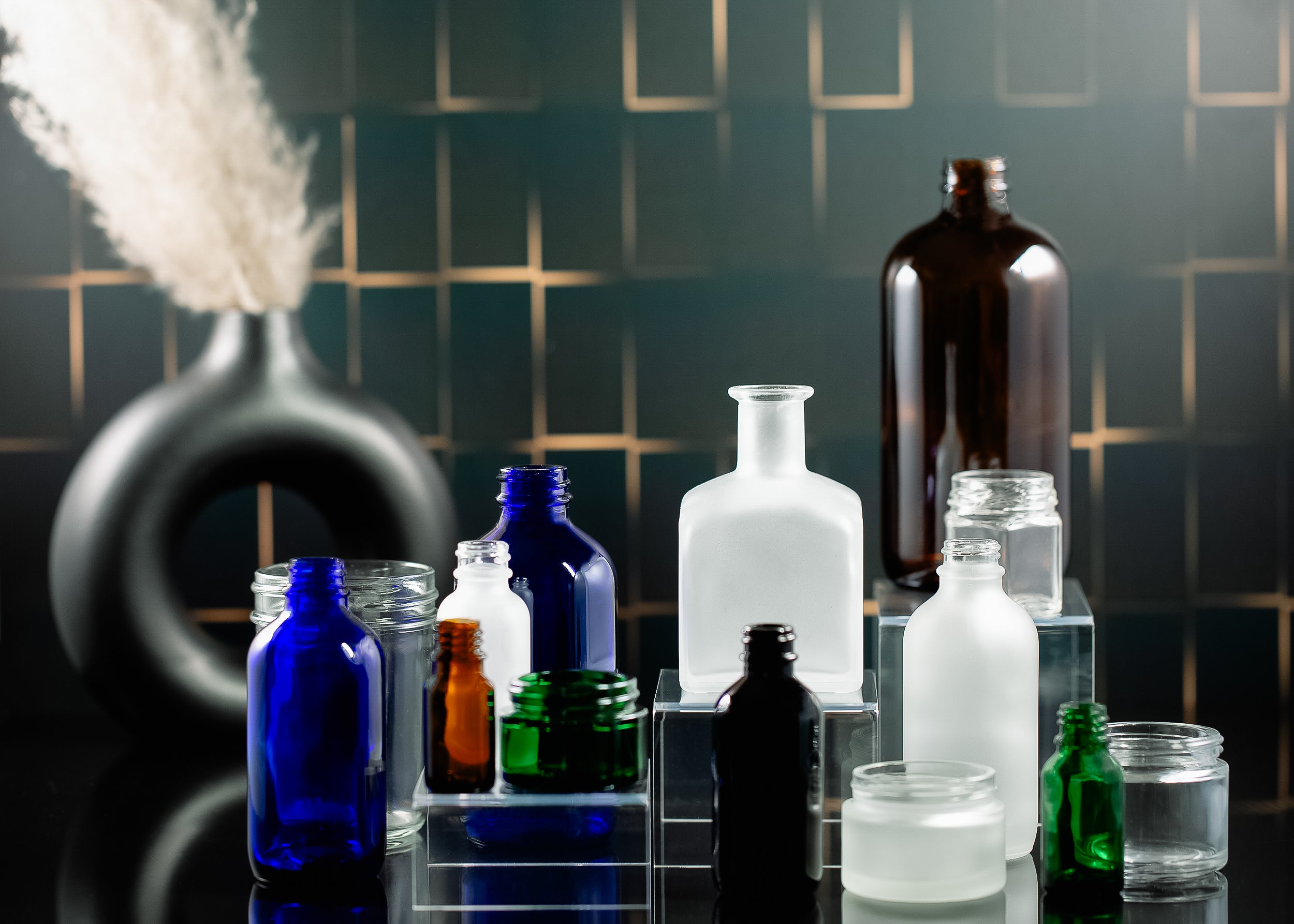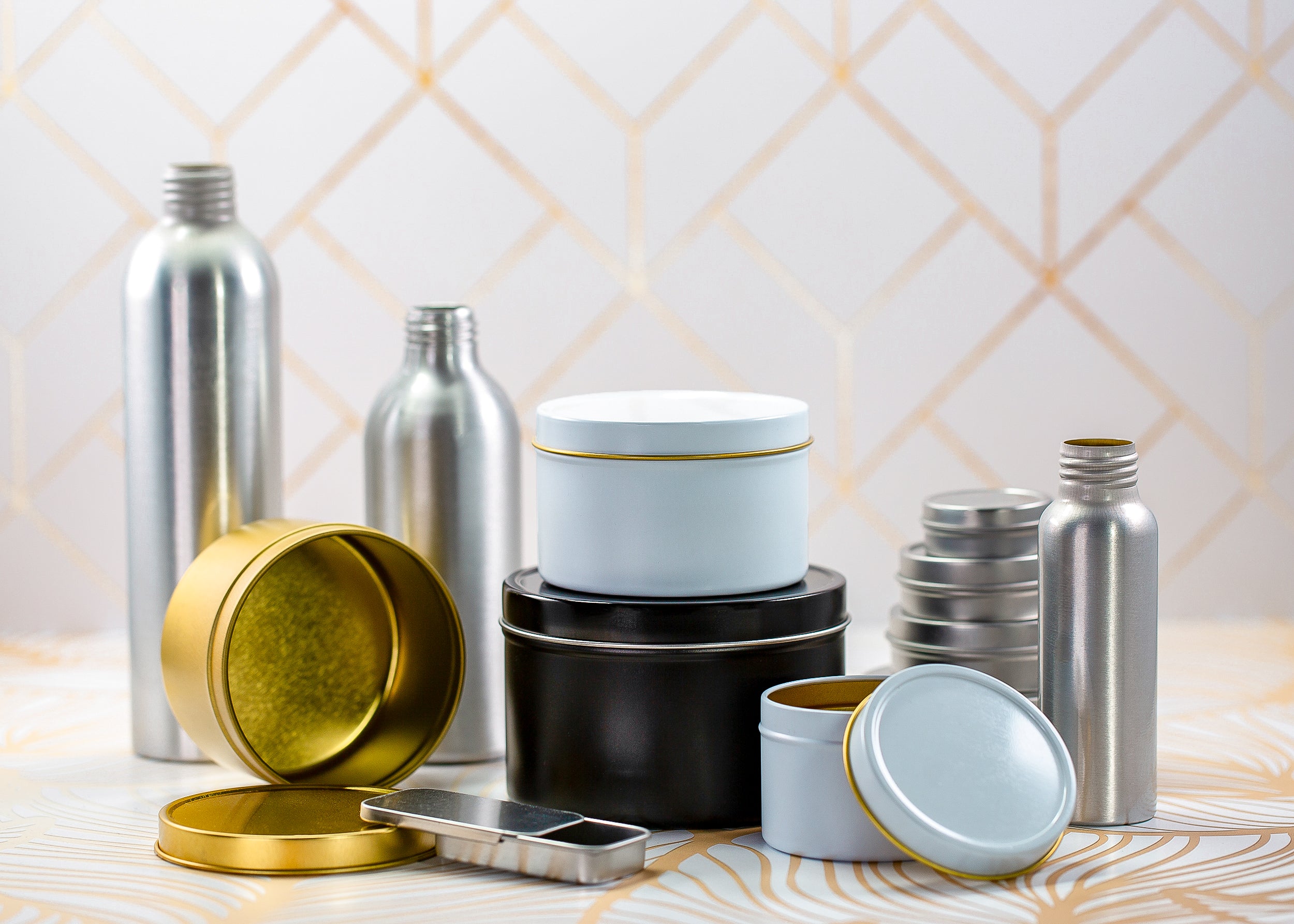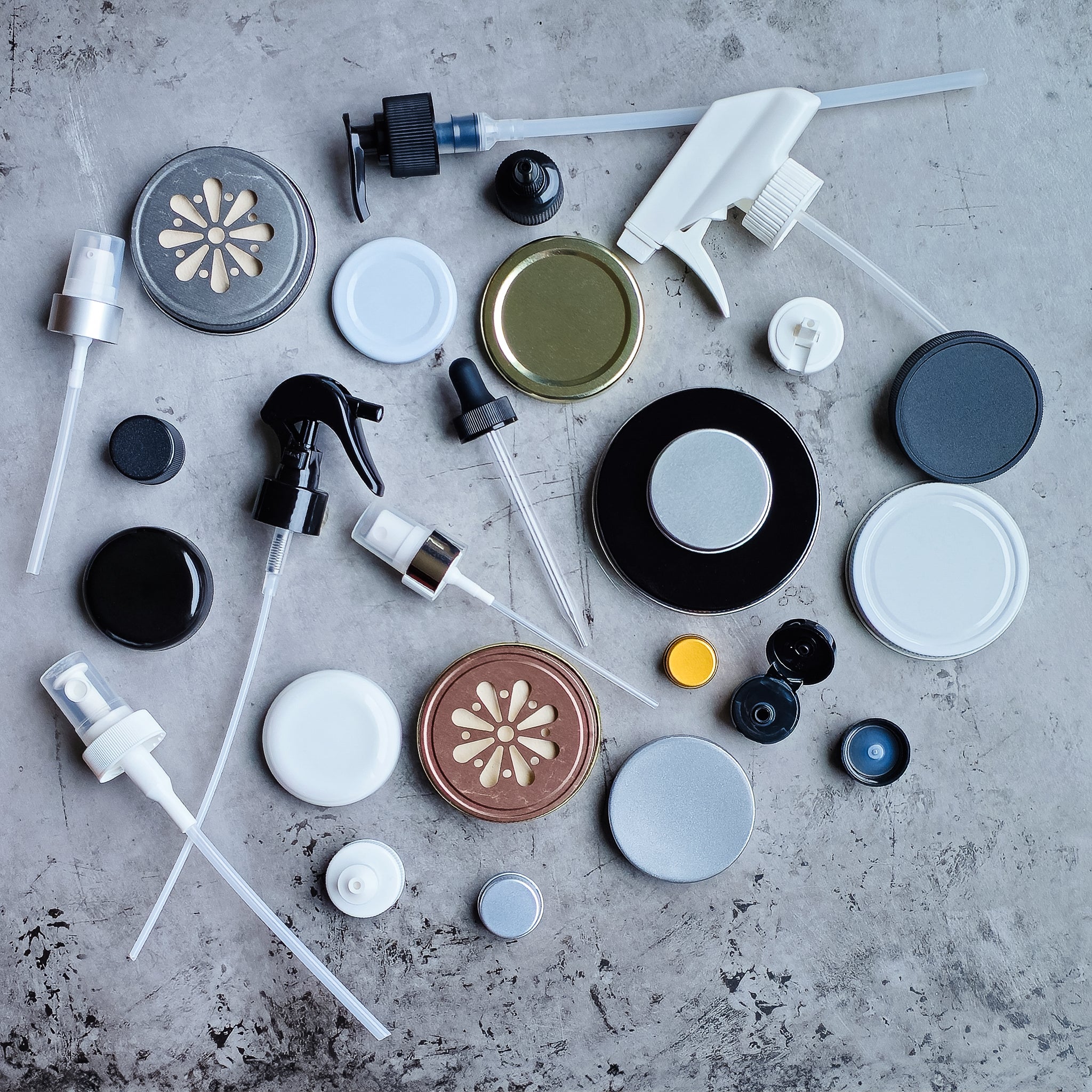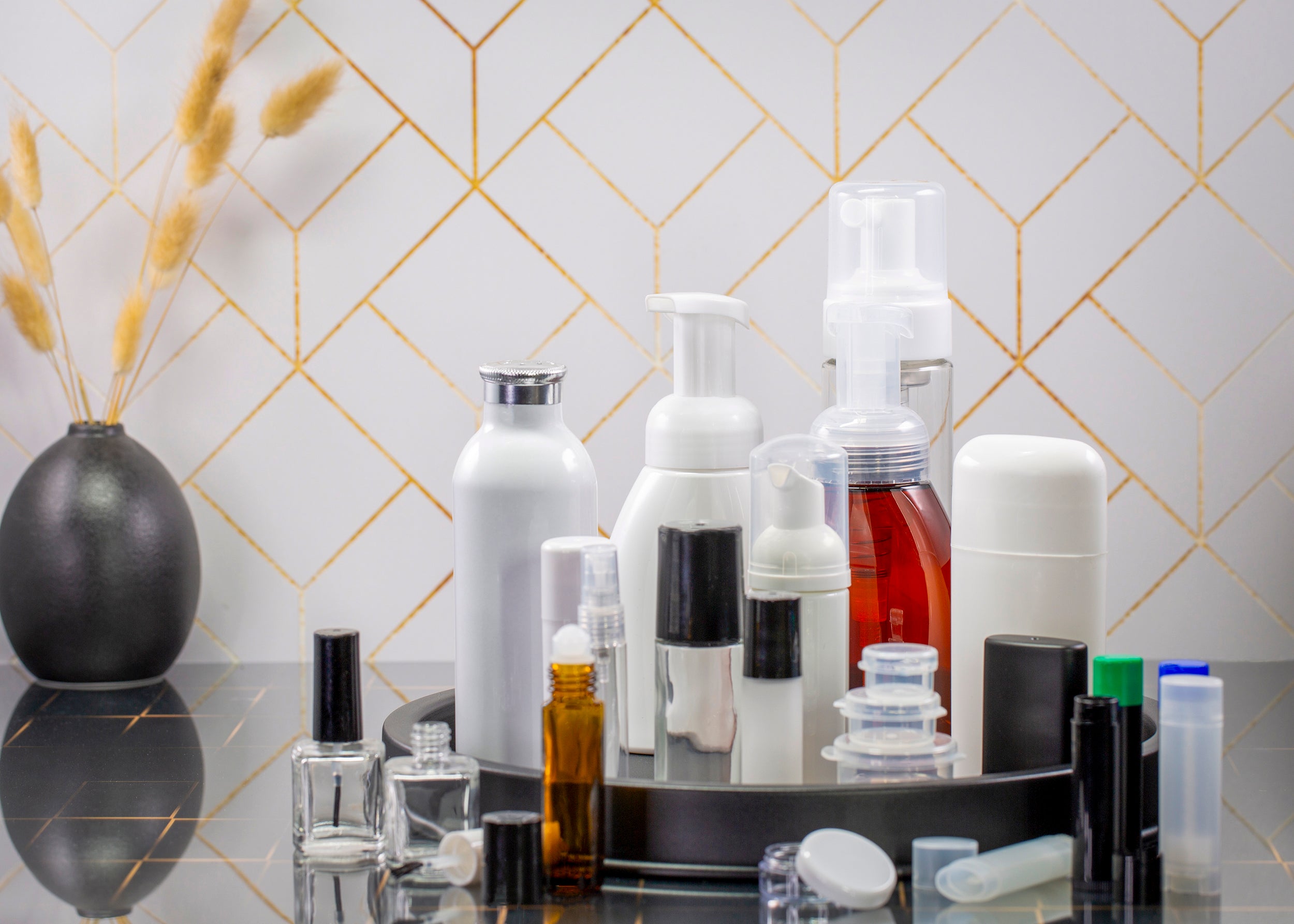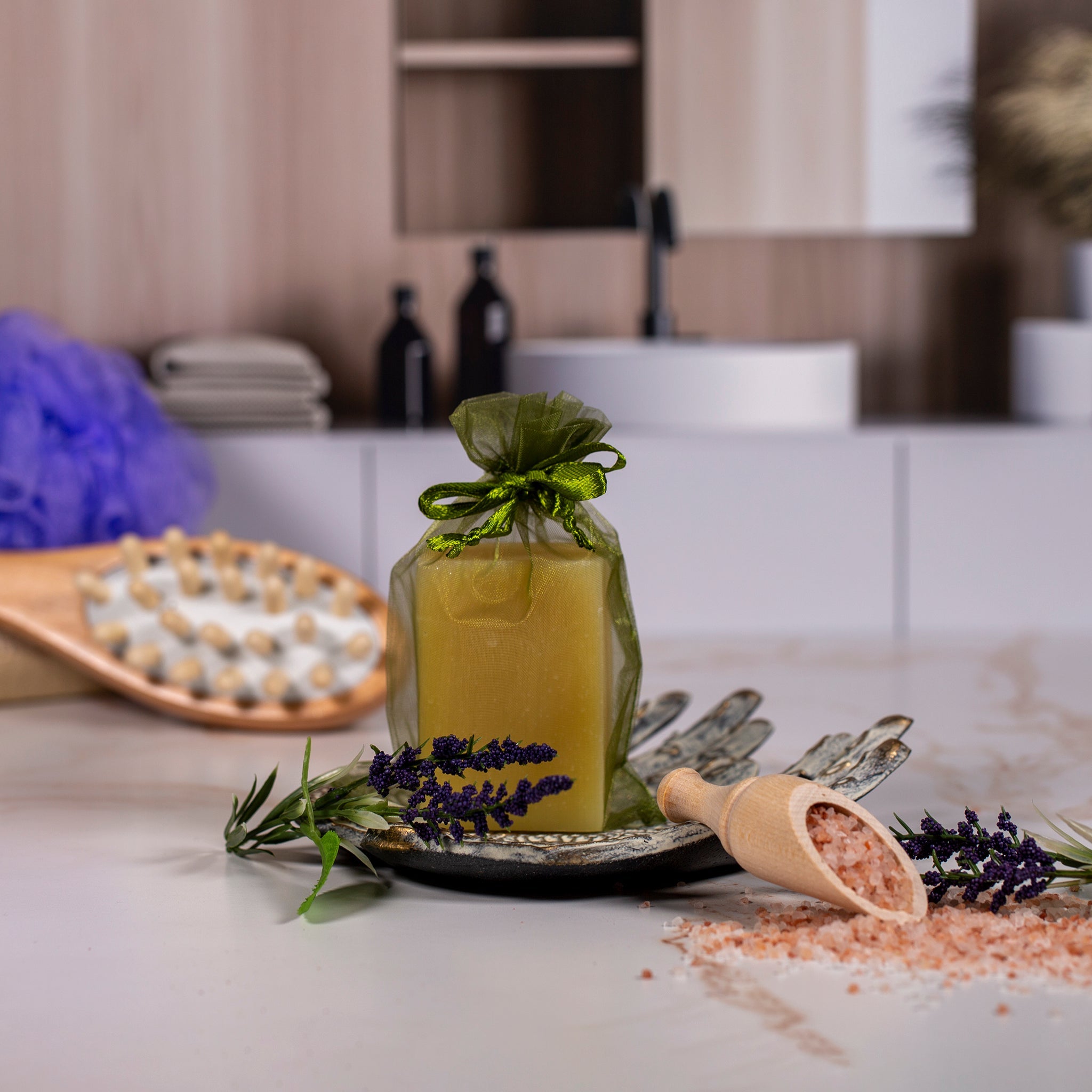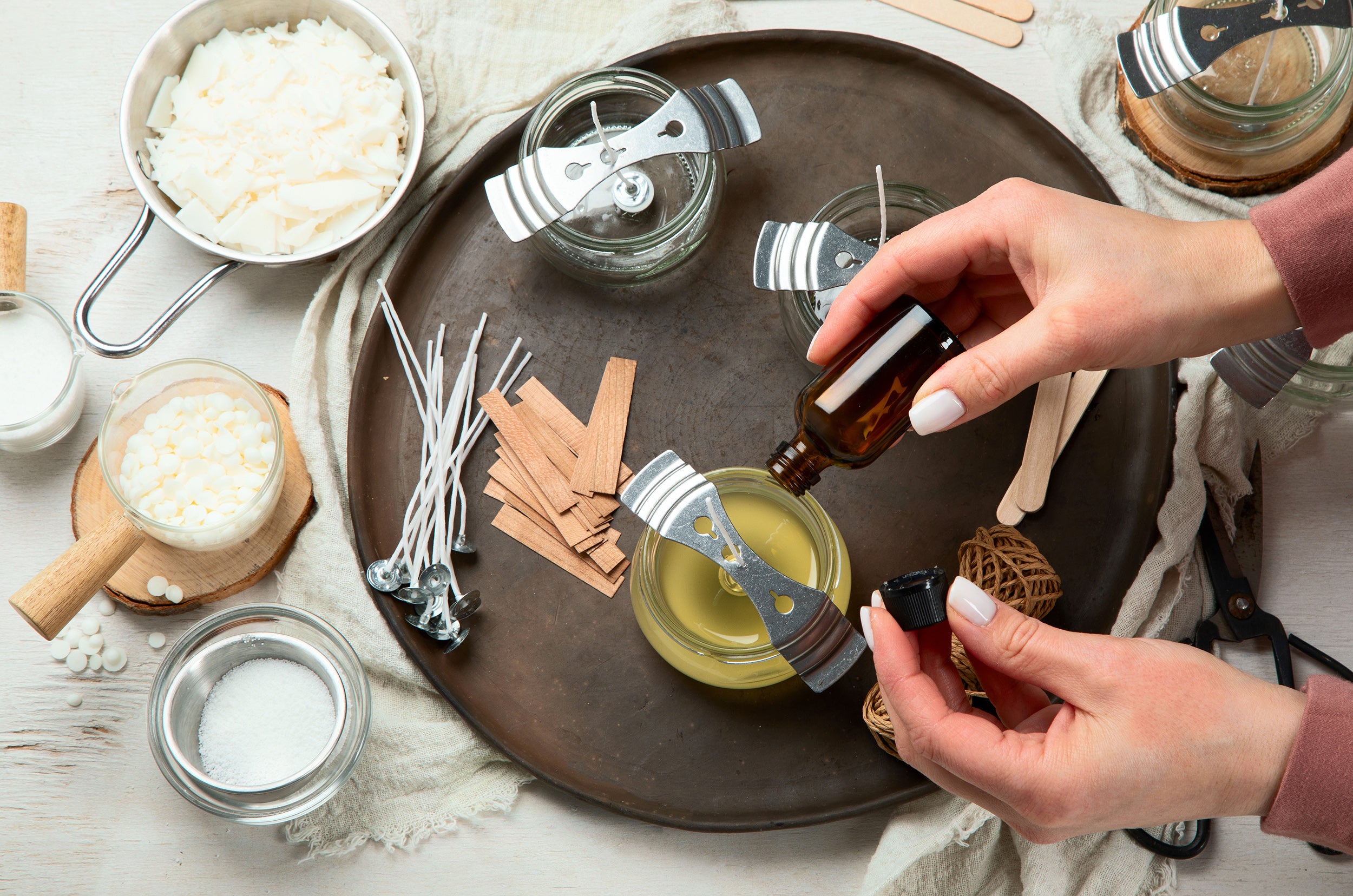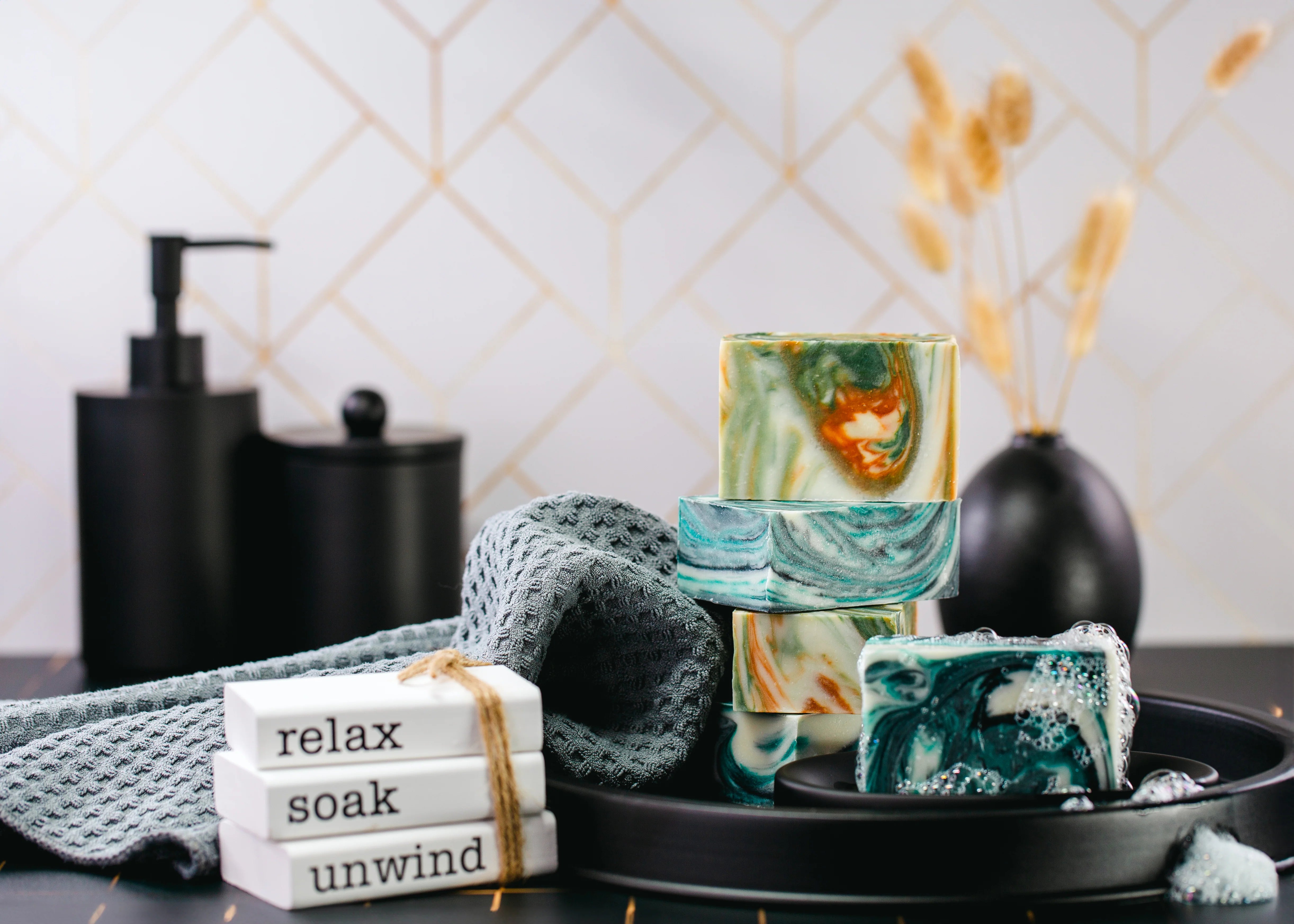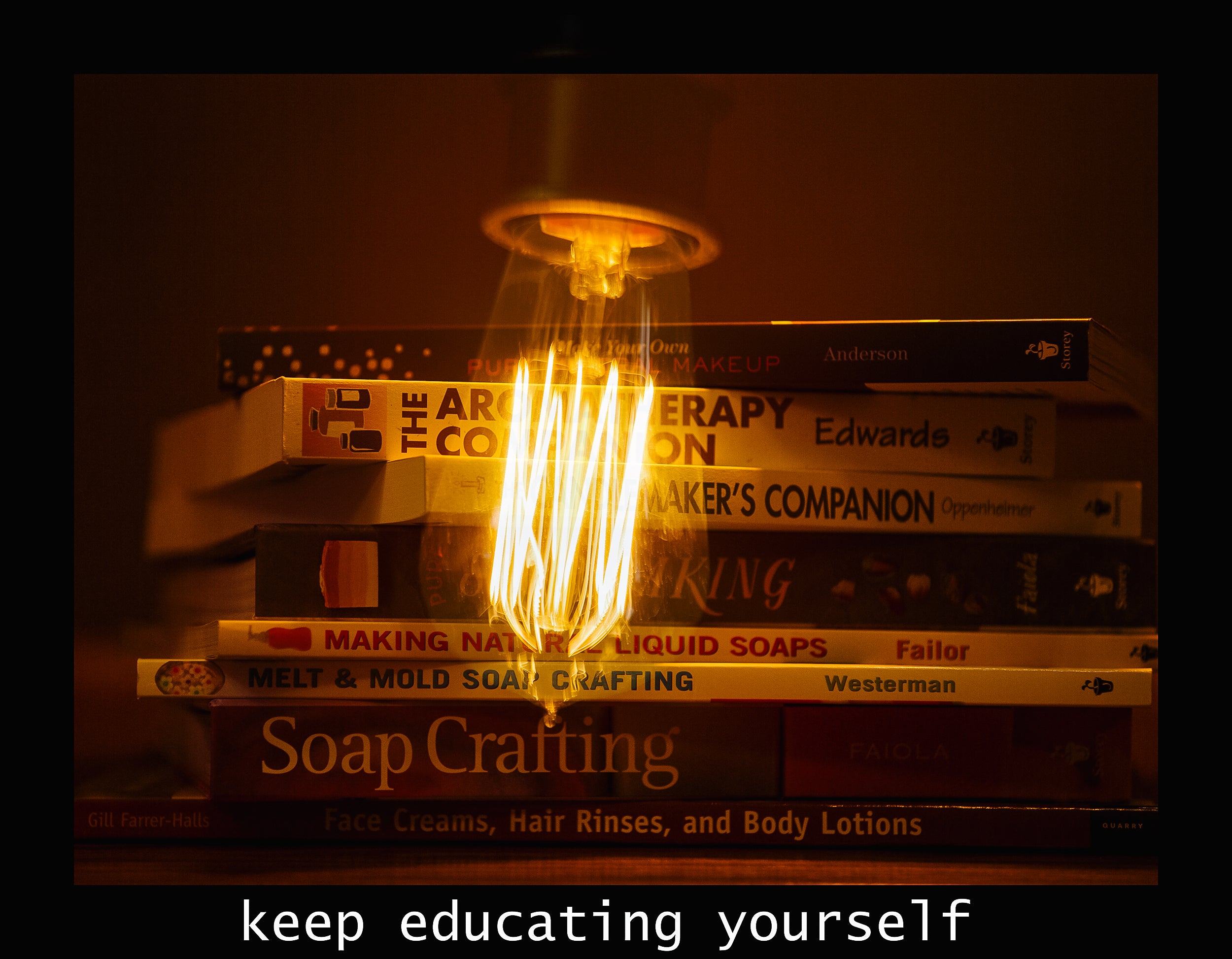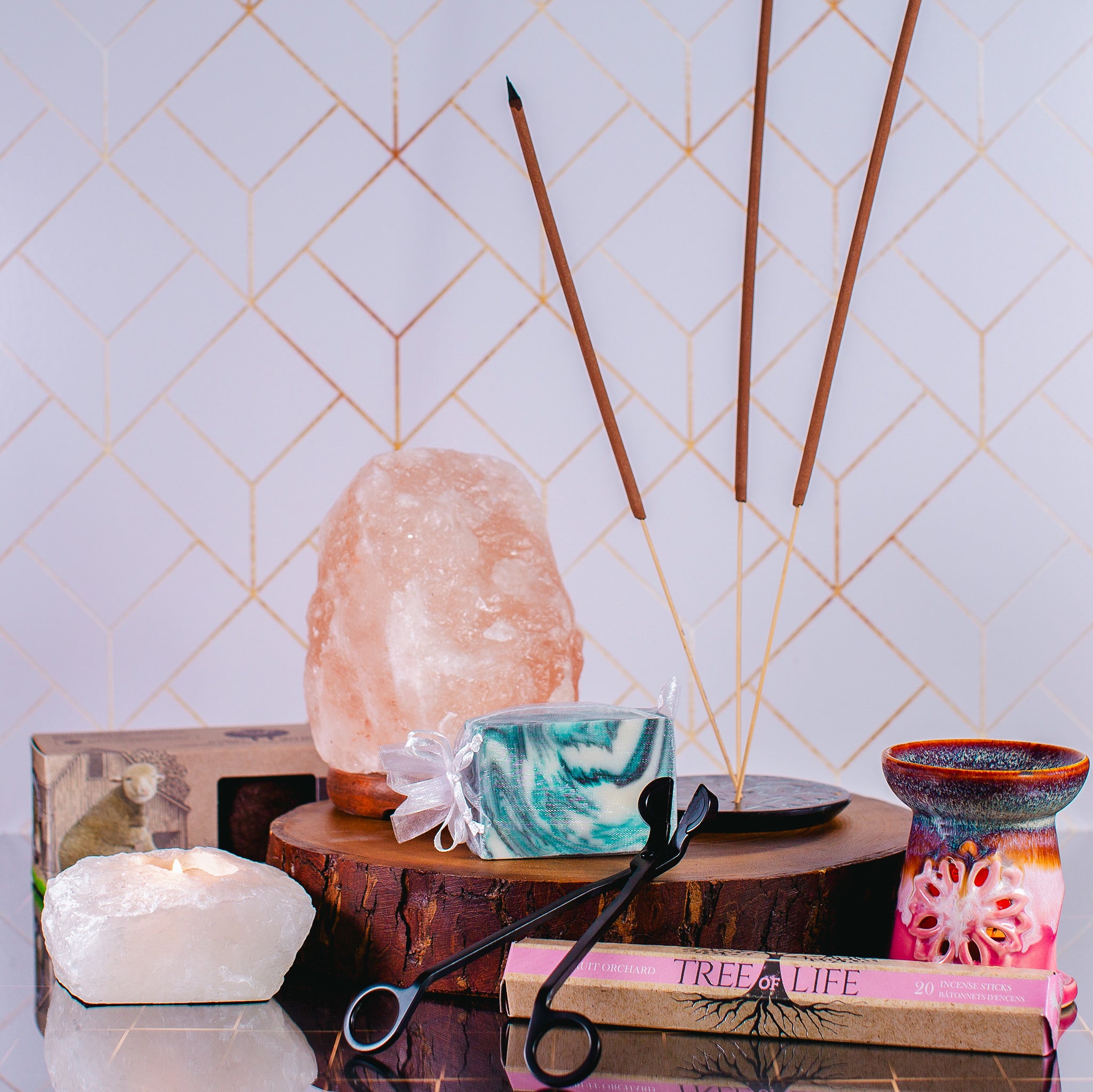Ready to dive into homemade soap? We've crafted a simple hot process soap recipe featuring the natural goodness of finely cut carrot and turmeric powder. If you have a garden, try using fresh ingredients from your own harvest for an extra-special touch. Making artisan soap is a fulfilling experience, and with hot process soap, you can enjoy your creations sooner thanks to its quick curing time. Dive into the comforting world of hot process soap-making with our easy-to-follow guide. We’ll walk you through each step, making sure you feel supported and confident as you create your own beautiful, handcrafted soaps.
Click here to download the Step-by-Step PDF Guide!
Recommended Ingredients:
- 620g Palm Oil
- 460g Coconut Oil
- 460g Canola Shortening
- 230g Lye
- 550g Distilled Water
- 60g Brown Sugar and Fig Fragrance Oil
- 5g Annatto Powder in 1 Tablespoon warm Water
- 1 Tablespoon Turmeric Powder
- ¼ Cup Pureed Carrot
- Calendula Petals
Optional:
- Carrots made of Soap Dough
Recommended Utensils:
- 1x Loaf Mold that holds 2320g
- 1x Measuring Cup
- 1x glass mixing cup for Lye
- Stick Blender
- 1x regular sized Whisk
- 1x small Whisk
- Scale
- Spatula
- Crock Pot or Double Boiler
- Gloves
- Master PRO Safety Glasses
- Long Sleeves
- 2x Thermometers
Directions:
- Step 1: Collect all the tools and ingredients you need to set up your workspace. Wear long sleeves, gloves, and eye protection for safety. Next, weigh the Palm Oil, Coconut Oil, and Canola Shortening into a large pot.
- Step 2: Measure the distilled water and gently stir in the lye. Be cautious, as the solution will heat up quickly to high temperatures. If you'd like to speed up the process, place the lye water in a cold water bath. Aim for the lye water solution and the oils in the large pot to both reach around 120°F.
- Step 3: Gradually warm your oils in a crock pot or double boiler until they reach 120°F, while allowing the lye water to cool. Regularly check the temperatures of both to ensure they match.
- Step 4: As the oils gently melt, take a moment to dissolve the Annatto Powder in warm water using a measuring cup. This step ensures a smooth and vibrant mixture.
- Step 5: Once both the oils and lye water reach 120°F, take the oils off the heat. Carefully pour the lye water into the oils while whisking continuously. Alternate between using a stick blender and whisk, but limit stick blending to 30 seconds at a time. As the soap batter thickens, look for a light trace, which will appear as lines on the surface when you move the batter.
.
- Step 6: When you notice a light trace, you're ready to move forward without needing the stick blender.
- Step 7: Add the dissolved Annatto to the soap batter and mix thoroughly for a warm, natural hue.
-
Step 8: Add the Turmeric Powder directly into the soap batter. Give it another good mix to ensure it's well blended.
- Step 9: Place the pot back on the double boiler or turn the crockpot to low heat. Let it simmer gently for 2 hours with the lid on.
- Step 10: After 10 minutes, check on the soap to ensure it's not overflowing from the pot. A little rise is normal, but if it starts to get too hot, it might overflow.
-
Step 11: Keep an eye on your soap and stir it every 30 minutes. It's perfectly normal to see it go through the Gel Phase, so no worries! Just remember to keep the lid on until the next stir.
- Step 12: Finely grind the fresh carrots into small pieces and weigh the fragrance oil. Once the soap is ready, be swift in adding the final ingredients, as it sets quickly.
- Step 13: After simmering for 2 hours, take the mixture off the heat. Gently stir in the Fragrance Oil and finely ground carrot pieces, ensuring everything is well blended.
- Step 14: Gently transfer the thick soap batter into your mold, using the spatula to create a peak in the center.
- Step 15: Carefully place the dried Calendula on top of the soap, adding the optional carrot embeds if you like. Then, give the surface a light spray of Isopropyl Alcohol to help prevent soda ash from forming.
- Step 16: After 24 hours, your soap should be solid enough to cut. Remember to cut it the next day to avoid it becoming too hard, making it difficult to slice.
- Step 17: After cutting your soap, let it cure for two weeks. During this period, the soap will become harder as water evaporates. Hot Process Soap cures faster than Cold Process because cooking removes most of the water content.
Note:
All recipes are provided for the use of the customers of Voyageur Soap & Candle Company Ltd. Their electronic or print reproduction is strictly forbidden.
All formulas and recipes have been formulated by Voyageur but we accept no liability as to their effectiveness or the success of the formulas when being made. It is essential that good manufacturing practices are followed in their use, and it is the responsibility of the user to meet the appropriate regulatory requirements of their jurisdiction in all matters.
All formulas remain the property of Voyageur, and their reproduction or redistribution is strictly forbidden without our written consent.
Tips:
Lye Safety:
Lye, in all its forms, is a caustic substance. It can be harmful if it’s not handled with care, and you cannot make soap without it.
Follow this Lye Safety list to keep yourself and others, as well as your home protected.
Soap Making Safety Checklist:
- Wear eye protection.
- Protect hands with lye-resistant gloves.
- Use gloves that are also essential/fragrance oil resistant: rubber, nitrile or latex.
- Wear long-sleeved clothes that cover your skin, as well as long pants and closed shoes.
- Wear an apron.
- Consider wearing a respirator mask while mixing the lye solution.
- Work in a place where you will be undisturbed.
- Keep children and pets out of the room while soap making.
- Ensure your workspace is clean and clear of clutter.
- Prepare your work space for your project.
- Use lye and heat-resistant equipment.
- Make soap on a surface that won’t react with lye.
- Keep paper towels on hand.
- When making soap, work near a sink so that water is always available.
- Mix the lye solution in a well-ventilated place.
- Store lye in a safe place.
- Protect skin and eyes from essential and fragrance oils.
- Only use glass, metal, ceramic, or PPE containers/utensils with essential and fragrance oil.
- When your soap is finished, keep protective gear on to clean your equipment.




